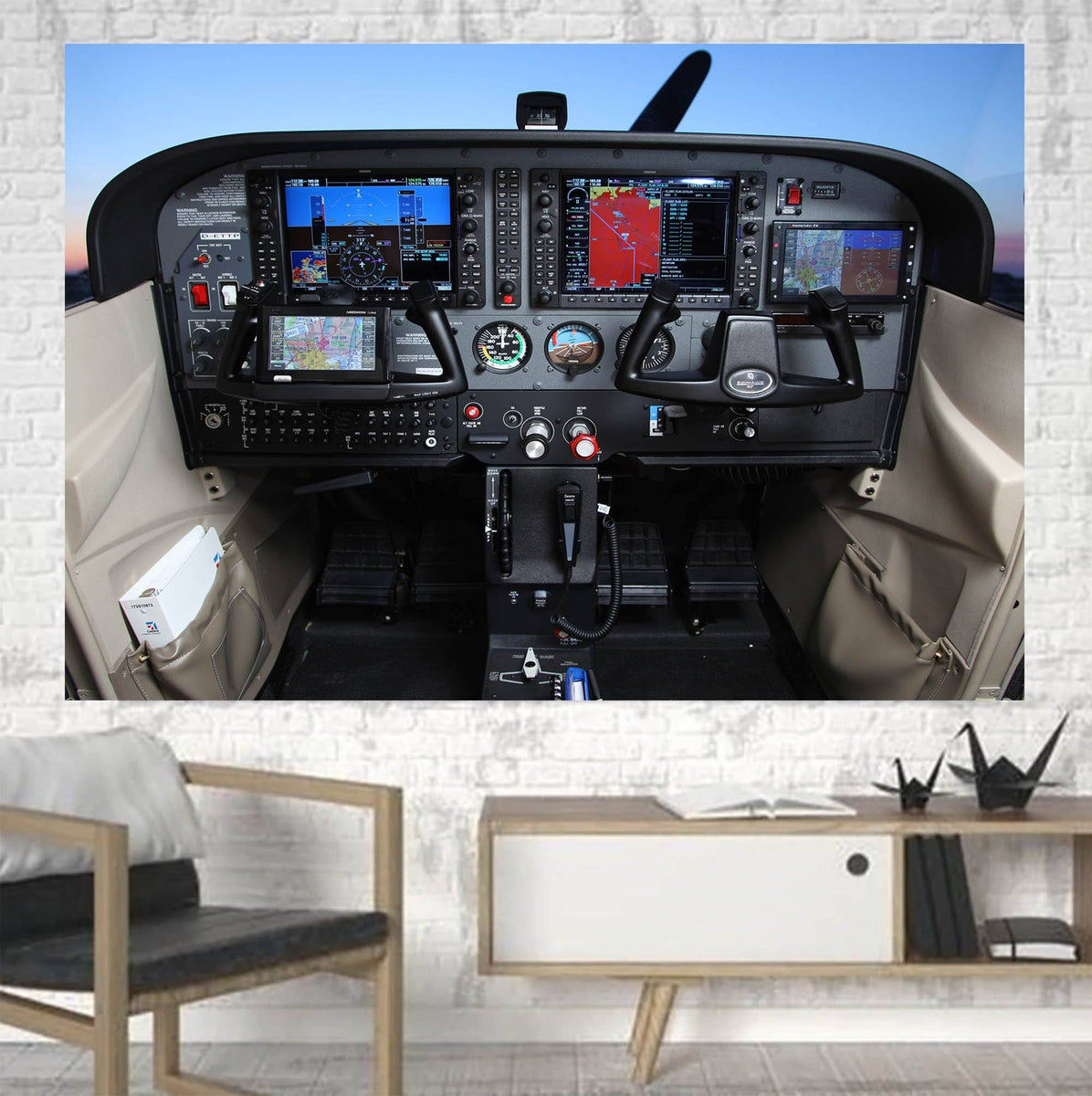

Diagram A – Example of typical stationary panel available area for Cessna 172 models from 1964 through 1976, with outlines of commonly requested avionics configurations.īut the reason for these nonstandard layouts might be more complex than some owners realize.I really enjoy your blog and the effort you have put into your simplane. The original instrument panel came in three parts. The first was a plastic overlay, which revealed only the faces of the instruments and presented the pilot with a relatively pleasing and uncluttered view. Once the plastic overlay was pulled off (or broken off due to age and wear), most of the instruments are contained in an aluminum panel known as the shock panel. The shock panel is attached to the structure behind it using a set of rubber mounts, meant to isolate the sensitive instruments from the vibration of the aircraft. Instruments typically considered less sensitive, such as engine and temperature gauges, were often mounted directly to the structure behind the plastic. That structural piece is called the stationary panel. It is a part of the aircraft’s structure and, according to the Cessna 172 service manual, considered not ordinarily removable due to being directly secured to engine mount stringers and a forward fuselage bulkhead. Over the many years of Cessna 172 production, the stationary panel has been redesigned several times, which creates many different nonstandard layouts through the early years. It is the stationary panel that defines the layout of the instruments, not the outer layers of the instrument panel. A redesign of the aluminum shock panel can sometimes yield slightly better results, but owners will often find it nearly impossible to achieve the look they want without running into the stationary panel structure behind.
#Cessna 172 cockpit side view download#
Members Only Article: Members should log in at the bottom of the article to download or view all of the diagrams in this article. An Overview of ModelsĮarly models of 172, from 1956 to 1958, took the design from earlier Cessna models, similar to the 170. The stationary panel was designed to be open around and above the yokes to allow for the various-sized instruments. Most of the instruments were positioned above the control wheels, while radios were below the control yokes in the lower panel, and both the shock panel and plastic overlay were one piece and contained all instruments. The 1959 172 and the 1960 172A panels held the same general shape, but most of the instruments were shifted to a shock panel that extended only from the left side to near the center. From there, the stationary panel housed most of the engine instruments. In all models 1960 and prior, instruments and radios were limited on placement due to the T shape of the control column, with a bar directly connecting the two control yokes behind the panel. Image 4: A Cessna 172B through 172D stationary panel, rear side.

The 1964 172E changed the T bar into a U shape welded to a center column. This opened up the space needed for the center radio stack. The pilot-side shock panel was slightly redesigned again to move the three 3.125-inch instruments above the yoke in a column, and the other instruments were shifted to cluster around the control yoke to compensate. Switches, fuses, cabin air, and heat controls were moved to the area below the pilot’s control yoke after giving up their previous positions to accommodate for the radio stack. To create space for this, the solution was to build up the control yoke support into a tapered area that created room for the displaced switches and controls.


 0 kommentar(er)
0 kommentar(er)
